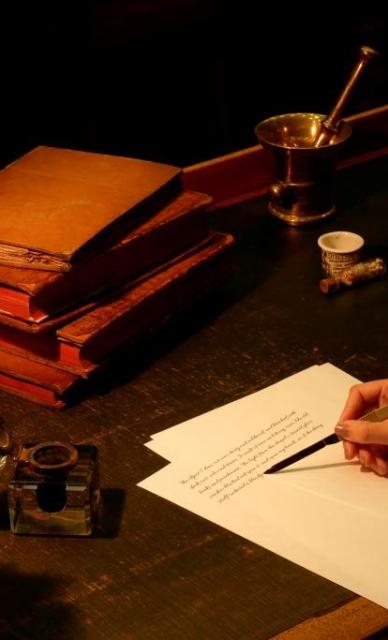Physicians' Gallery Newsletter
Updates on upcoming events, exhibitions and online stories
The Royal College of Physicians of Edinburgh has a rich history of development and support for the city's physic gardens, dating back to the seventeenth century. Sir Robert Sibbald not only founded the Royal College of Physicians of Edinburgh, but by co-founding the physic garden at Holyrood Abbey in 1670 he also became the founder of what is now the Royal Botanic Garden Edinburgh.
It seems fitting, therefore, that this close link between the two institutions should be celebrated by creating a new physic garden. In 1993, plans were made for a collaboration between the two institutions to convert a hidden courtyard of the Royal College of Physicians at 9 Queen Street into a “jewel”; into a “small, but exquisite garden”.
David R. Mitchell, leading horticulturist and garden designer for the Royal Botanic Garden Edinburgh, was entrusted with creating this historically symbolic space. The available courtyard space was confined and the light levels (being surrounded by tall buildings) would pose a challenge to many plants. A traditional sundial as the focal point of the garden was not feasible without a clear view of the horizon, so a bust of Sibbald was, very fittingly, chosen instead. The design takes a modern interpretation, which reflects the importance of plants to mankind throughout the ages.
This new physic garden revives medical, botanical and institutional histories. It is a showcase not only for medicinal plants, but for the scientists and publications associated with them.
You can find out more about the contents of the physic garden here.
You can also discover more about the history of Edinburgh's physic gardens here.
Bed One: The Early Herbalists, features plants included in the writings of the Roman and Greek herbalists Pliny, Theopharastus and Dioscorides. Other plants were selected from the writings of the Emperor Charlemagne, who decreed that medicinal plants should be cultivated throughout the land to aid his troops.
Bed Two: The 16th & 17th Centuries, focuses on the rise of herbalism in Great Britain from the late 15th to the 17th century, with the work of the well known herbalist and botanist William Turner, considered to be the father of English botany after the publication of his book A New Herball, between 1551 and 1561.
Bed Three: The 18th & 19th Centuries, celebrates the contribution made by Philip Miller and Elizabeth Blackwell, as well as the discoveries of new plant treatments from the Americas.
Bed Four: The 20th & 21st Centuries, celebrates the use of plants in medicine today and looks into the future with research into the use of new plant compounds.


Physicians' Gallery Newsletter
Updates on upcoming events, exhibitions and online stories